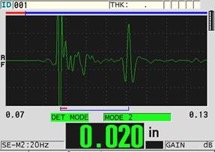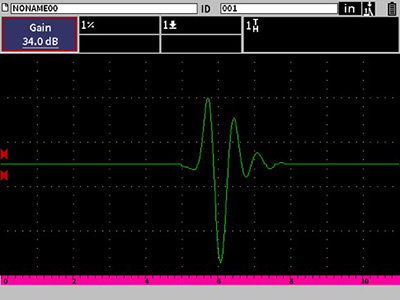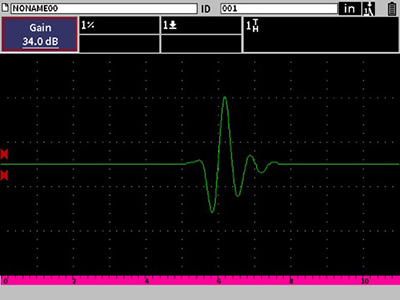High-voltage insulators are used to attach electric power lines to utility poles and transmission towers without allowing dangerous electric current to flow through the tower to the ground. Porcelain, ceramic, and composite materials are used as insulators for power transmission lines and railroad traction power wires because of their high levels of electrical resistance.
Coatings Combat Contaminants
Over time, atmospheric contaminants, such as salt spray or chemical dust, can build
Silicone coatings are applied to high-voltage insulators to prevent flashovers caused by contaminant buildup. To be effective, the coatings must meet minimum thickness requirements and be securely bonded to the insulator. Because the coating is expensive, most manufacturers only apply the minimum required thickness.
Insulator manufacturers check coating thickness and bonding as part of quality control, and routine service inspections are required to ensure that high-voltage insulators continue to meet safety requirements. Two of our solutions are regularly used for these inspections—coating thickness measurement and silicone insulator bond testing.
Measuring Coating Thickness
Ultrasonic thickness gaging can quickly and nondestructively verify that silicone coatings meet the minimum required thickness. Ultrasound will reflect from the boundaries between materials of different acoustic impedances. Because silicone has an impedance lower than a ceramic or composite insulator, sound energy reflects from the silicone/insulator boundary. By calibrating a thickness
You can measure the thickness of silicone coatings with a 38DL PLUS® or 45MG ultrasonic thickness
 Silicone coating measurement with an M1016 probe |  Silicone coating measurement with an M2055 delay line probe |
Silicone-Insulator Bond Testing
The silicone coating and composite insulator must be bonded for proper electrical performance, and bond failures can result in flashovers. Using an ultrasonic flaw detector or thickness gage with a waveform display, it’s possible to quickly and nondestructively check the integrity of this bond. For testing these bonds, we recommend an EPOCH® 650 or EPOCH 6LT ultrasonic flaw detector or 38DL PLUS or 45MG ultrasonic thickness |
|
Related Content
Bond Testing in Composite Power Line Insulators
Measurements of Silicone Coatings on Porcelain High Voltage Insulators
Phase Shift Test for Bond Integrity
Ringdown Test for Bond Integrity
Get In Touch



